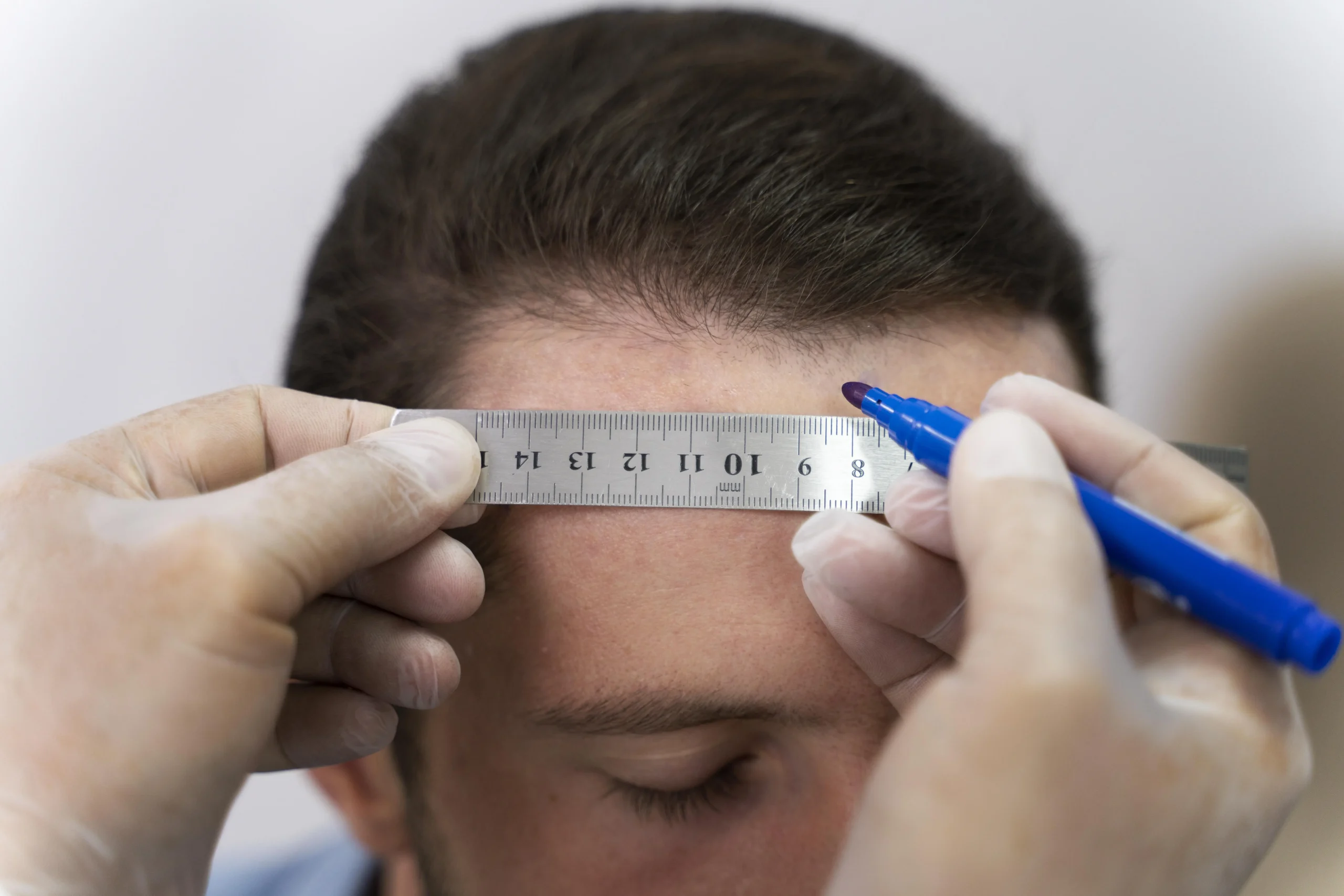
Painless hair transplantation, also known as needle-free or pressure-assisted anesthesia hair transplant, is a technique that makes the procedure virtually pain-free by replacing traditional needle injections with high-pressure devices to deliver local anesthetic beneath the skin. Once the scalp is numbed, the hair transplant continues using standard techniques such as FUE (Follicular Unit Extraction) or DHI (Direct Hair Implantation).
This innovation significantly reduces anxiety, discomfort, and fear, especially for patients sensitive to needles or undergoing the procedure for the first time.
This procedure is ideal for individuals with sparse, over-plucked, scarred, or genetically thin eyebrows, and provides long-term, natural-looking results.
The key difference lies in how the local anesthetic is applied. Instead of using needles, a special device delivers the anesthesia through pressurized air or a spring-loaded mechanism that pushes it into the tissue.
Once the area is numb, the hair transplant is performed as usual:
This approach makes the entire treatment process more comfortable and less intimidating.
Painless hair transplantation is ideal for individuals who:
This method can be used with both men and women and is suitable for all modern transplant techniques, including beard, eyebrow, and unshaven procedures.
Recovery is the same as in traditional hair transplantation. Most patients return to light activities within two to three days. Mild redness, swelling, or small scabs may appear and typically subside within a week. Hair shedding begins within the first month, followed by visible regrowth from the third or fourth month. Results are seen in ten to twelve months.
The pain-free technique applies to the anesthesia stage. Once the scalp is numb, the rest of the procedure is already painless. This approach simply eliminates the discomfort of needle injections.
Yes. Needle-free devices effectively numb the targeted area. The level of numbness and safety is the same as with conventional methods.
Yes. The devices used are safe, FDA-approved, and widely used in both medical and aesthetic procedures.
Your doctor will inform you in advance if this applies.
Yes. Painless anesthesia can be used in all types of hair restoration procedures, including sensitive areas like the beard, mustache, and eyebrows.
No. The only difference is in the anesthetic application. The hair transplant process, healing, and outcomes remain unchanged.
Yes. It can be used in both small and large graft sessions. For extended cases, a combination of painless and traditional methods may be used for efficiency.
Risks are minimal when performed by a qualified surgeon. Temporary redness, swelling, or mild itching may occur. Long-term complications are rare.

Medipol University Hospital, being the justifiably proud of Medipol Education and Health Group in Turkey and in the world, resulting in this spirit, is a health complex having JCI standards accepting patients from all over the world.
TEM Avrupa otoyolu göztepe çıkışı no:1, 34214 Bağcılar/İstanbul